
Part 5 The Whiffler Road Machines
The Early GEI Years (1976 to 1996)
Flow-Wrapping Machines
The
new
packaging
technology
was
sweeping
the
industry,
"Flow-wrapping"
also
known
as
Horizontal
Form,
Fill,
and
Seal
(HFFS),
this
style
of
packaging
produced
a
pillow
pack
style
wrap,
and
is
still
the
most
popular
form
of
food
wrapping
today,
and apart
from
the
introduction
of
cold
sealing
in
the
early
90s
it has
not
changed
much
over
the
last
50
years,
Autowrappers
first
flow-wrapper
was
developed
and
manufactured
in
the
1960s
but
now
new
technology
was
becoming
a
crucial
part
of
the
design
of
the
packaging
machines,
with
the
main
benifit
of
being able to run at faster speeds
.
The Auto-Wrapper "Mk1" Verso-FLow
The
MK1
Flow-wrappers
became
extremely
successful
and
took
a
stronghold
on
the
UK
packaging
market,
partly
because
of
its
flexibility
but
mostly
because
of
its
robustness,
proven
by
the
fact
that
a
lot
of
these
machines
are
still running today, 47 years later
Photo Ref: AW0687 Versoflow
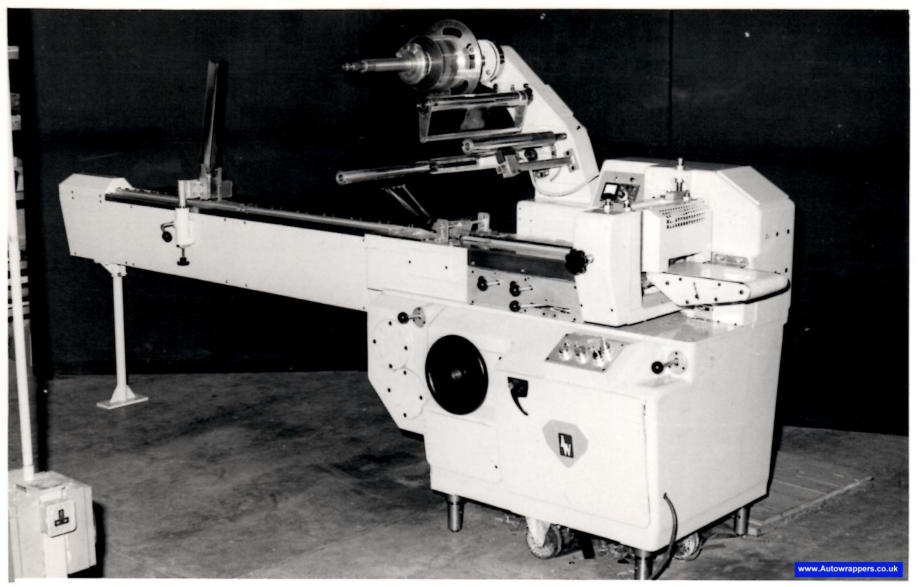
Photo Ref: AW0683 Versoflow

Photo Ref: AW0684 Versoflow Data sheet

Photo Ref: AW0685 Versoflow Biscuit On Edge version (BOE)

The New generation of Flow-Wrappers
In the early 1970s Auto-Wrappers introduced
a new range of Veso flow Flow-wrappers,


The Flyer for the Verso Flow Cut and Wrap Machine.
Photo Ref: AW0655 front page

The Flyer for the Verso Flow Cut and Wrap Machine.
Photo Ref: AW0656 back page.

The
Flyer
for
the
Verso
Flow
Box
Motion
Machine.
this
machine
was
designed
for
perishable
goods
that
required
a
stronger
hermetic
seal,
this
was
achieved
by
letting
the
end
crimp
stay
in
the
seal
area
for
an
extended
period
of
time, ( longer seal dwell ) the end crimp did not rotate, but followed the film as it moved through the machine.
Photo Ref: AW0657 front page.
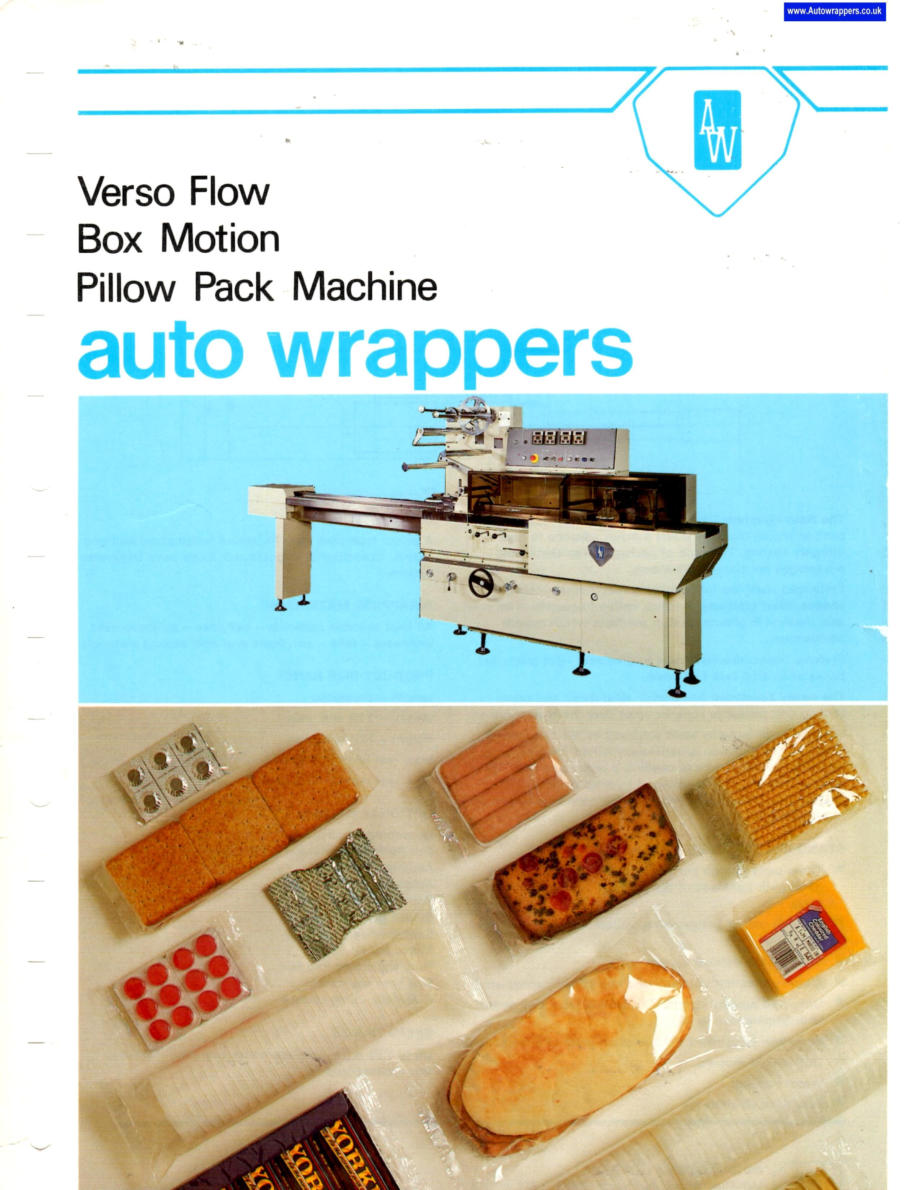
The Flyer for the Verso Flow Box Motion Machine.
Photo Ref: AW0658 back page.
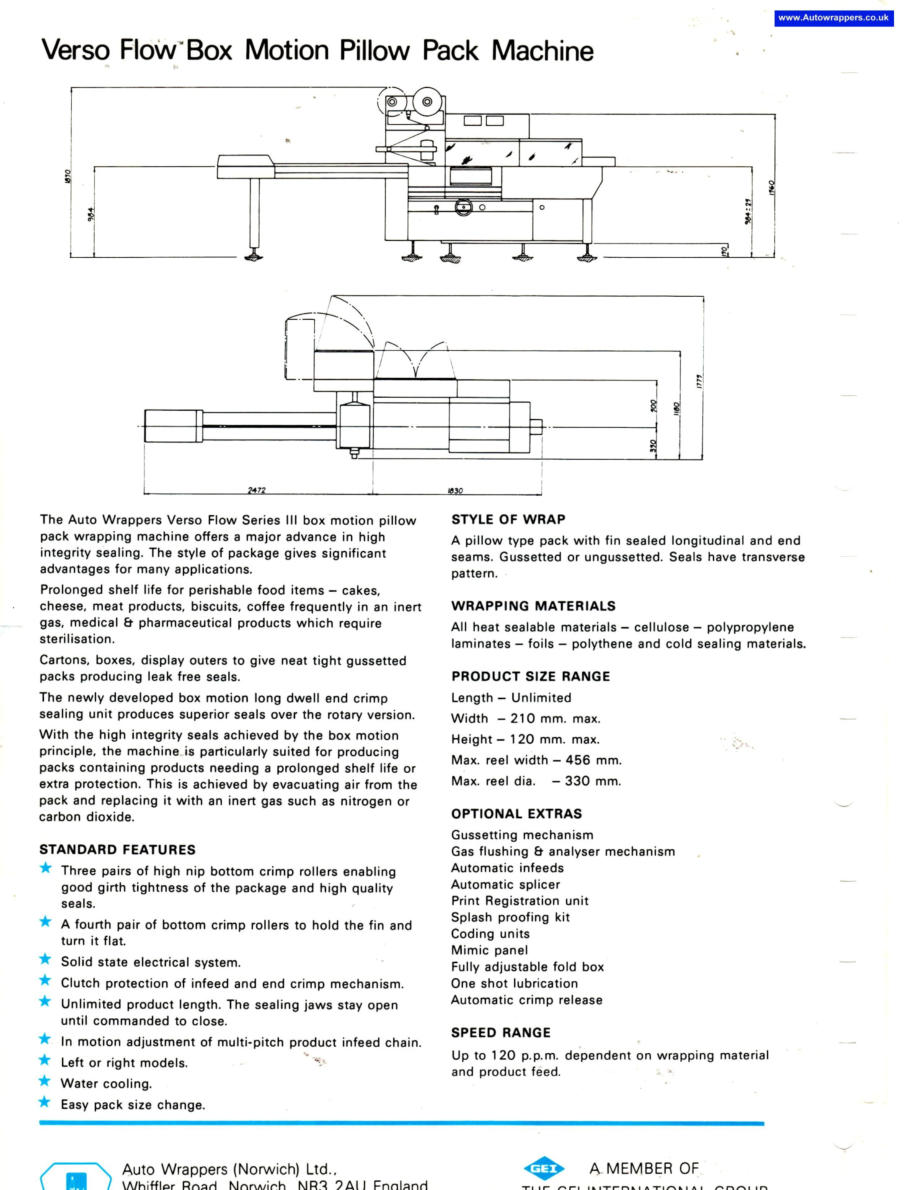
The Mechanical Machines of the 90s

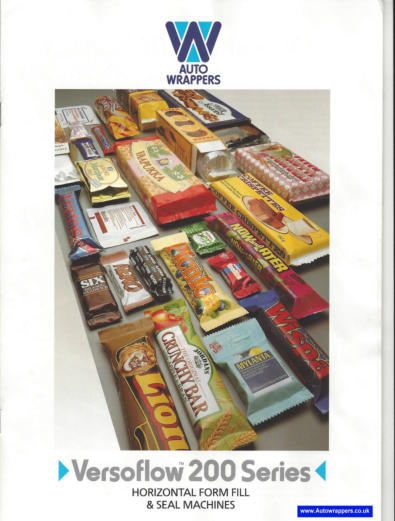

The late 1980s introduced Computer technology
During
the
1980's
an
electronic
and
computer
revolution
was
sweeping
the
world,
one
of
these
technologies
was
the
introduction
of
Servo
Motors,
these
motors
could
be
controlled
accurately
by
a
computer.
they
became
ideal
for
packaging as they replaced many gear boxes and mechanical parts, they also made machine adjustments
simple and could instantly recall settings for different products
The
brochure
below
was
for
the
original
"Concept
Electronic
Machine"
when
the
machine
was
eventually designed and manufactured, it was totally different to the image shown below.
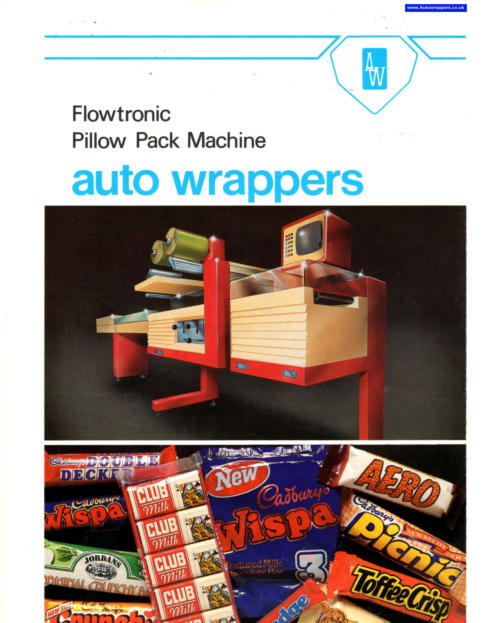
Below
is
the
brochure
for
the
first
production
electronic
servo
based
machine,
Autowrappers
utilised
the
name
Flowtronic,
a
combination
of
Flow-wrapper
and
electronic,
this
name
is
still
used
today
for
the
Auto
wrapper
brand
of
Flow-wrappers manufactured by Bradman Lake.
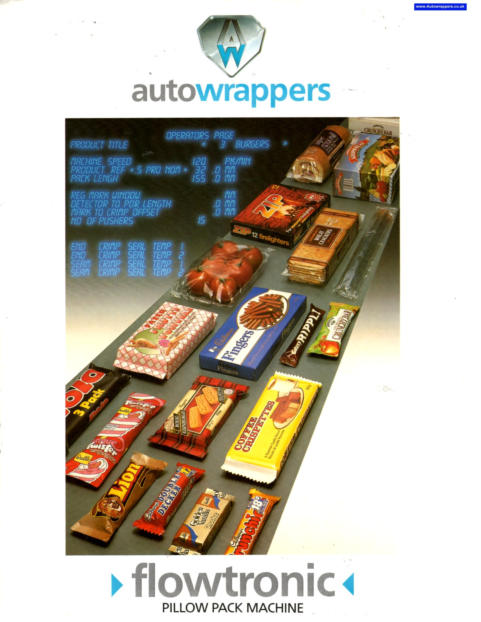
The
new
electronic
servo
based
machine
became
established
and
the
design
was
modified
to
make
it
more
sleek
and the computer was incorporated into the main body of the machine, this became the Flowtronic 310 machine.
To view the complete sales brochure in a new
window

in
the
early
90s
the
design
was
improved
yet
again
to
what
became
one
of
the
most
robust electronic flow-wrappers ever built by Auto-wrappers, this became the model 410
To view the complete sales brochure in a new
window

As
customer
demand
for
faster
machines
was
realised,
Auto-Wrappers
developed
the
Flowtronic 610 this machine could achieve speeds of over 1000 packs per minute.
To view the complete sales brochure in a new
window

To view the complete brochure in a new window click on the image below.
To view the complete brochure in a new window click on the image below.
To view the complete brochure in a new window click on the image below.
To view the complete brochure in a new window click on the image below.
To view the complete brochure in a new window click on the image below.
To view the complete brochure in a new window click on the image below.
To view the complete brochure in a new window click on the image below.
To view the complete brochure in a new window click on the image below.
To view the complete brochure in a new window click on the image below.
To view the complete brochure in a new window click on the image below.

